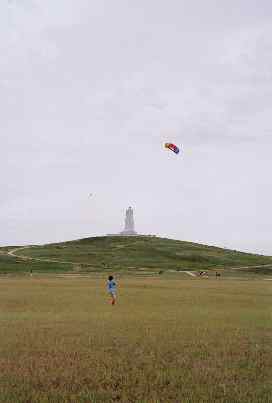 Well as predicted, mother ocean called us back to visit and I couldn’t think of a better place than the Outer Banks in North Carolina. There are some awesome learning opportunities here. Well as predicted, mother ocean called us back to visit and I couldn’t think of a better place than the Outer Banks in North Carolina. There are some awesome learning opportunities here.Our studies this year include Aerospace Engineering, and what better place than the state that was “First in Flight”? Our trip included an afternoon flying kites on the very grounds where Orville and Wilbur Wright launched man into the space-age at Kitty Hawk, well really it is Kill Devil Hills, near Jockey's Ridge State Park, but who’s nitpicking on what we remember from our history? Before we left we studied the plane and the kites that were used at the Wright Brothers Aerospace Museum in Dayton, Ohio, but there's nothing like actually going to the place where flight began! |
|
The Currituck Beach Lighthouse is an interesting step back into maritime history as are all the lighthouses in the area. The Whalehead Club has an interesting. It has been restored and is a fun place to visit, as well as the village that surrounds it. It isn’t as bustling as Roanoke or Williamsburg, as it tells a different story. It is a place where you can launch a kayak, have a picnic, catch a Blue Crab. | ||
The Cape Hatteras National Seashore is an awesome example of maritime life long ago. The Cape Hatteras Lighthouse is just one aspect you;ll find in this area. Cape Hatteras National Seashore preserves the portion of the Outer Banks of North Carolina from Bodie Island to Ocracoke Island, stretching over 70 miles. Included within this section of barrier islands along N.C. Route 12, but outside the National Seashore boundaries, are Pea Island National Wildlife Refuge and several privatecommunities.
| ||
There are many kayaking opportunities at the Outer Banks. We paddled on the Currituck Sound, near the The Outer Banks Center for Wildlife Education and saw mainly marshy terrain. The Alligator River refuge, about an hour inland offered soem pretty interesting paddling as well, thought there was not an alligator to be found! We were treated to three brown bears munching on something in the middle off a grassy field. I think if we ever go back to the Outer Banks , we'll paddle around the Pea Island National Wildlife Refuge. It seemed like an interesting place. | ||
Another bit of local lore I was determined to discover this trip to the Outer Banks was the Wild Horses of Corolla. Locally they are known as Banker Horses and are they something to see running out of the dunes. You need 4 wheel drive vehicle to get to the place where the horses live these days, but it is worth that effort.
|

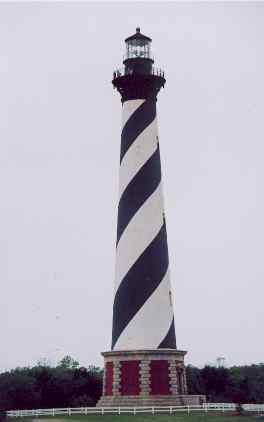
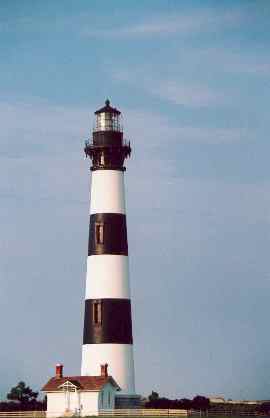
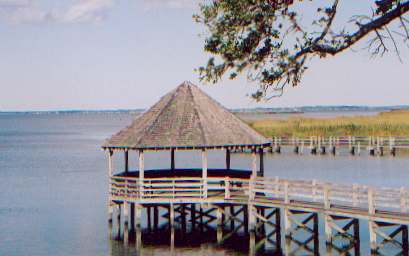
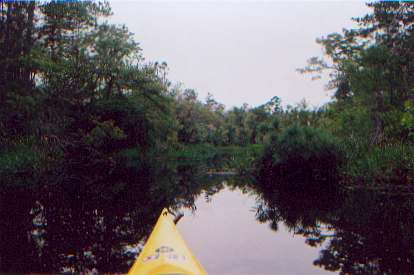
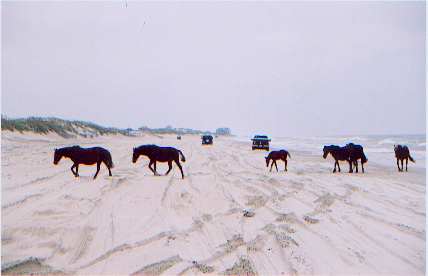

 Life
as a homeschooler and in constant daily contact with a highly gifted student
brings an energy I can't explain, yet drains me; makes me think about
things in a new way, yet causes me to stick with tried and true methods;
makes me strive for accomplishing all the tasks I need to, yet causes
me to think forward to the time my student will go to bed and I can have
a cup of tea and listen to Jimmy Buffet in peace and quiet. Eclectic.
That's the description of the path I am enjoying on my journey right now.
Eclectic is also our homeschool "style". We do what works. We
dig in the dirt or the beach sand, we kayak on rivers, we read, we travel.....
Life
as a homeschooler and in constant daily contact with a highly gifted student
brings an energy I can't explain, yet drains me; makes me think about
things in a new way, yet causes me to stick with tried and true methods;
makes me strive for accomplishing all the tasks I need to, yet causes
me to think forward to the time my student will go to bed and I can have
a cup of tea and listen to Jimmy Buffet in peace and quiet. Eclectic.
That's the description of the path I am enjoying on my journey right now.
Eclectic is also our homeschool "style". We do what works. We
dig in the dirt or the beach sand, we kayak on rivers, we read, we travel.....